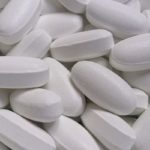1. 27.1% of patient in the statin group reported muscle pain and weakness compared to 26.6% in the control groups.
2. Risk of symptoms appeared to be more common among patients in the higher dose statin group.
Evidence Rating Level: 1 (Excellent)
Study Rundown: Statins are lipid lowering agents that decrease the risk of cardiovascular disease through inhibition of the HMG-CoA reductase enzyme. Well-known, but rare, side effects of statins include myopathy and myalgia. However, whether these symptoms occur because of the statin itself is controversial. This meta-analysis aimed to assess the effect of statin therapy on muscle pain and weakness using evidence from 19 placebo-controlled randomized trials. The primary outcome was the incidence of statin-related myalgia at one year, while key secondary outcomes included excess muscle pain and weakness as well as rise in creatine kinase. According to study results, patients in the statin group reported an increase in mild muscle pain, although this was not due to the statin. Furthermore, most reported cases of muscle pain or weakness occurred in the first year and did not lead to treatment discontinuation since they were deemed to be clinically mild. This study was strengthened by the accumulation of data from several large, well-conducted, randomized trials, thus adding to its validity.
Click to read the study in The Lancet
Relevant Reading: 20-Year Follow-up of Statins in Children with Familial Hypercholesterolemia
In-depth [meta-analysis]: This study comprised of patients from 19 double-blind trials of statin versus placebo (n=123 940) and 4 double-blind trials of more intensive versus less intensive statin regimen (n=30 724) between 1994 and 2016. Included were trials with ≥ 1000 patients who were on statin therapy for ≥ 2 years. Among placebo-controlled trials, mean age of patients was 63 years (standard deviation [SD] 8) and 48.1% (n=59 610) had previous vascular disease. The primary outcome of myalgia and myopathy was marginally greater in the statin therapy group (n=16 835, 27.1%) compared to placebo (n=16 446, 26.6%; rate ratio [RR] 1.03, 95% confidence interval [CI] 1.01-1.06). A dose-dependent effect was seen as more intensive regimen versus placebo resulted in more symptoms (RR 1.08, 95% CI 1.04-1.13) compared to less intensive therapy versus placebo (RR 1.03, 1.00-1.05). In the first year of statin therapy, there was a 7% relative increase in muscle pain and weakness (RR 1.07, 1.04-1.10); however, after year one, the excess muscle pain attributed to statin use was not seen (RR 0.99, 0.96-1.02) Statin therapy mildly increased creatine kinase levels. Overall, findings from this study suggest that while statins may increase the likelihood of myalgia and myopathy, this does not appear to be treatment related. Furthermore, the cardiovascular benefits of statins far outweigh their risks.
Image: PD
©2022 2 Minute Medicine, Inc. All rights reserved. No works may be reproduced without expressed written consent from 2 Minute Medicine, Inc. Inquire about licensing here. No article should be construed as medical advice and is not intended as such by the authors or by 2 Minute Medicine, Inc.


